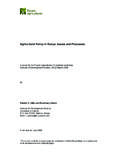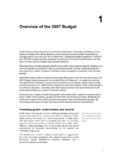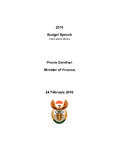Transcription of Rural Water and Sanitation Strategy and …
1 Rural Water and Sanitation Strategy and investment plan 2000-2015 Table of Contents Chapter 1 Background .. 1 1 Policy and Legal Framework .. 2 The National Planning Strategy - Rural Water Supply Programme (RWP) (1991).. 2 Uganda National Programme of Action for Children (UNPAC, 1992) .. 3 Poverty Eradication Action plan (PEAP) .. 3 Other Sector relevent programmes .. 4 Sector Reform .. 4 Chapter 2 Overview of Rural Water and Sanitation 6 Policy and Legal Framework .. 6 The Local Governments Act 6 The Water Statute, 1995.
2 6 The National Environment Statute, 1995 .. 11 Other Related Policies and Laws .. 11 Institutional Framework .. 12 Central 12 Local Governments .. 13 User Community .. 13 Private 13 Donors & 14 Rural Water and Sanitation Status .. 14 Rural Water Coverage .. 14 Water Supply Technology 16 Community Based Maintenance System (CBMS) .. 17 Water Quality .. 18 Rural Sanitation Coverage .. 18 Sanitation Technology options .. 18 Chapter 3 investment plan .
3 20 Strategy Concept .. 20 Sector Objectives and Goals .. 21 Rural Water Supply Investments .. 21 Planning Criteria .. 21 Unit Capital and Maintenance 22 Technology Mix/Options for Rural Water Systems .. 22 Population to be 23 District Level Rural Water Supply Investments .. 23 Rural Sanitation 23 Assumptions .. 23 Rural Sanitation investment .. 24 Sector Investments and 24 Chapter 4 Implementation Strategy .. 28 Sector Challenges .. 28 Sector investment Financing.
4 28 Procurement of Goods and Services .. 30 Roles and Responsibilities .. 30 Modalities for Capacity Building and Support to enhanced Improved 34 Modalities to Ensure Accountability and Donor Specific Requirements .. 39 i ii List of Tables Table 1: Rural Water Facilities by 1986, 1996 and 2000 .. 14 Table 2: Rural Water Supply Coverage by District .. 15 Table 3: Water Quality Standards .. 18 Table 4: Service 21 Table 5: Unit Capital and Maintenance 22 Table 6: Summary of Rural Water Supply and Sanitation Investments to 2015.
5 25 Table 7: Physical and investment Milestones .. 27 Table 8: Institutional Development Milestones .. 36 List of Appendixes Appendix 1 Rural Water and Sanitation Investments by Districts 1 CHAPTER 1 BACKGROUND INTRODUCTION The Uganda population is currently estimated at 22 million, of which only 13% live in the urban areas and the rest (87%) live in Rural areas sub-divided into Rural Growth Centers (2000-5000 people) and scattered homesteads (< 2000 people). Water is a key strategic resource, vital for sustaining life, promoting development and maintaining the environment.
6 Access to clean and safe Water and improved Sanitation facilities and practices leads to improved health and are essential investments in human capital and therefore have a direct and immediate impact on the quality of life and contributing to long-term social and economic development, thus eventual elimination of poverty in Rural areas. Although Uganda is considered (within the region) as being well endowed with Water resources, the country is experiencing Water management issues relating to seasonal and spatial variability of Water resources, increasing Water demand and deteriorating Water quality.
7 Rapid population growth; increasing agricultural, urbanization and industrial activities; poor Sanitation facilities and habits; and poverty are causing serious depletion and degradation problems of the available Water resources in the Rural and peri-urban areas. Provision of safe Water supply and Sanitation facilities, their proper management and utilization, are necessary conditions for health and economic development. Inaccessibility to safe Water supply was reported as one of the ten community priority problems in The Uganda Participatory Poverty Assessment Project (UPPAP, 2000).
8 Poverty was/is partly caused by lack of clean Water and poor Sanitation because of the resultant disease burden and restricted production. The lack of access to clean Water places a heavy workload on women and children who collect it from distant sources and who often have to wait for hours in queues. This practice results in children missing school and women having limited time for agricultural and other productive tasks. Owing to the long distances they travel to collect Water , the average Water use per capita is half the minimum recommended amount for drinking, cooking and adequate hygiene.
9 Water handling and storage is often unhygienic, resulting in Water from a safe source becoming contaminated by the time it is consumed, which limits the achievement of the intended health benefits. Sanitation awareness on the relationship between safe Water , hygienic practices, wastes disposal and health remains low. The construction of excreta management and disposal facilities at household; institutions (schools, health facilities, offices etc.); and public places (markets, eating places, parks etc.)
10 Is not accorded the deserved priority, often considered an additional expense. The UPPAP (2000) report identified cost of construction, difficult soil types, high Water table, lack of digging implements, laziness, ignorance, high mobility of some populations and lack of commitment by local authorities as some of the reasons for failure to construct and maintain latrines. In some cases, proper utilisation of the latrines where they exist is not universal by all members of the community due to various taboos and beliefs.
















